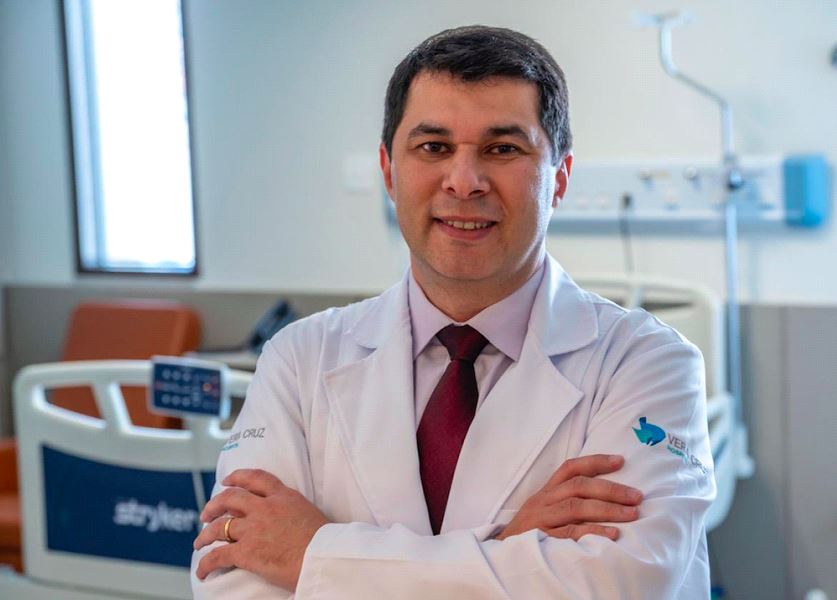Action distributed awareness material on Thursday (24/02/2022), between 11am and 1pm, at the intersection of Francisco Glicério and Aquidabã avenues.


February, 2022 - In 2020, the Municipal Development Company of Campinas (Emdec) recorded 61 deaths in the urban network of Campinas, of which 57% tested positive for alcohol. In 48.5% there was a prohibitive alcohol level.
The scenario is highlighted by the week of the National Day to Combat Drugs and Alcoholism (20/02), as well as the arrival of the Carnival holiday (25/02), known nationally for its excesses.
Po alert the population to the risks of the combination of drugs and driving, Vera Cruz Hospital, in partnership with Emdec, is holding an educational blitz on Thursday (24) on the subject.
Between 11 a.m. and 1 p.m., a team from Emdec will hand out a folder produced by Vera Cruz Hospital at the intersection of Francisco Glicério and Aquidabã avenues.
As well as data on accidents caused by drug use, the material will include a QR Code through which motorcyclists, drivers and pedestrians will be able to access videos of hospital specialists explaining the consequences of drug and alcohol use on the body.
Chemical dependency (licit or illicit drugs) or "substance use disorder" is characterized by the World Health Organization (WHO) as a disease. In the body, the effects of alcohol can leave serious sequelae or irreversible damage.
According to Gisele Figueiredo Ramos, a clinical doctor and nutrologist at Vera Cruz Hospital, continuous drinking can lead to numerous health problems. "O alcohol addiction mainly affects the liver and the brain areas responsible for controlling motor skills, and affects memory and the ability to think and concentrate," he says.
The consumption of licit and illicit drugs can also cause various side effects in the body in the short or long term. "There can be changes in appetite and sleep, changes in heart rate and blood pressure, and the development of mental illnesses," she explains.
According to the National Center on Addiction and Substance Abuse at Columbia University, 40% to 50% of the factors that lead to substance use disorder are genetic.
According to psychiatrist Petrus Raulino, also from Vera Cruz Hospital, in addition to genetic factors, there are also social, environmental, biological, a life history of difficulties and traumatic situations in childhood, personality traits such as impulsiveness, or even underlying psychiatric problems.
"These are all reasons that can contribute to the development of a compulsion for substances. Our mission is to take care of people, because addiction to or abuse of substances has negative consequences, not only socially, but also in terms of physical and mental health," he says.
According to the expert, international research shows that around 90% of people with a substance use disorder had their first use in childhood or adolescence. On the other hand, among all those who use substances before the age of 18, 25% develop into dependence or abuse.
Before the age of 21, the figure is one in 25. "The younger you are, the greater the danger. Children and adolescents are at extreme risk. For teenagers, educational measures with space for dialog without judgment can help with prevention," says the psychiatrist.
To treat the disease, Raulino stresses the importance of taking into account the characteristics and the moment the individual is living through:
"Follow-up should be done by a multi-professional care team, with a psychiatrist and psychologist usually in consulting rooms and, during intoxication or withdrawal crises, through urgent and emergency medical care, as well as possible referral for psychiatric hospitalization in a specialized service in extreme cases. Support groups and family therapy are extremely important in rehabilitation," he says.
Drugs X Driving
According to the World Health Organization, three million deaths a year worldwide are the result of the harmful use of alcohol, which accounts for 5.3% of all deaths.
Many stem from a disastrous combination: drugs and driving. According to data from the São Paulo state government, between January 2019 and July 2021 there were 12,470 traffic accidents involving suspected drunken driving, with 892 deaths.
Traffic accidents can also result in head trauma, open fractures, internal bleeding, hip fractures and spinal fractures (which can lead to paraplegia or quadriplegia).
The Brazilian Traffic Code (CTB) states that driving under the influence of alcohol or refusing to blow into the breathalyzer are very serious offenses, according to articles 165 and 165-A. The fine for such situations is R$ 2,934.70. In the event of a repeat offense within 12 months, the penalty is doubled (R$ 5,869.40) and the driver's license is revoked.
Service
Blitz for good
Date: February 24th (Thursday)
Schedule: from 11 a.m. to 1 p.m.
Address: intersection of Francisco Glicério and Aquidabã Avenues, Centro, Campinas - SP
About Vera Cruz Hospital
In its 78 years of existence, Vera Cruz Hospital has been recognized for the quality of its services, its technological capacity, its team of renowned doctors and for offering humane care that values life first, without prejudices or psychophobia.
Vera Cruz has 167 beds distributed in different hospitalization units, in single (apartment) or collective (two beds) accommodation, ICUs and maternity wards.
The institution also has Chemotherapy, Hemodynamics, Monoplace Hyperbaric Chamber, Radiology (including tomography, magnetic resonance, bone densitometry, ultrasound and x-ray), and a laboratory with the Fleury quality seal Medicine and Health. In October 2017, Hospital Care became a partner of Vera Cruz.
In four years, the alliance has seen important advances in the provision of services generated by investments in innovation and technology. In the medium term, the group plans to expand its services with the creation of two new buildings in front of and next to the main hospital, totaling an additional 17,000 m² of built area.
30 years ago, Vera Cruz opened and maintains the Roberto Rocha Brito Foundation, a reference in health training and courses in the Campinas Metropolitan Region, both for professionals in the sector and for lay people, and is an accredited unit of the American Heart Association.






